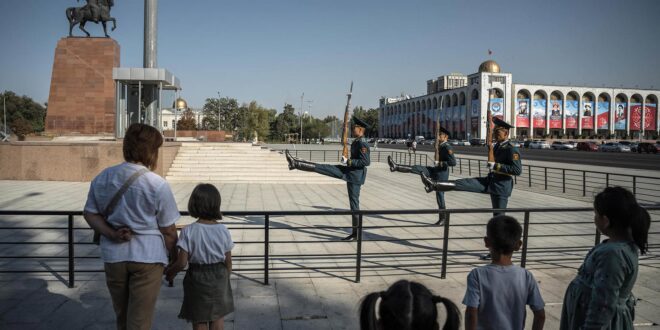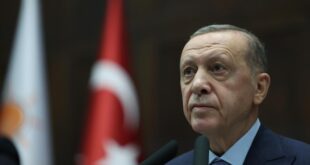Is the region becoming the next battleground for great power competition? Not if Central Asian states have anything to say about it.
As the Group of Seven met at the end of last week in Hiroshima, Japan, China organized a summit with Kazakhstan, Kyrgyzstan, Tajikistan, Turkmenistan and Uzbekistan, marking a new chapter in Beijing’s engagement with the region. Central Asian states are looking for a new partner to help ensure their own security against domestic rebellions, as Russia’s war in Ukraine has limited Moscow’s ability to fulfill a longstanding role as a guarantor of domestic stability in the region. While most of the summit’s public discussion focused on economic and trade issues, China noted that it would help Central Asia enhance it’s law enforcement and security capabilities, which aligns with Beijing’s intensifying campaign for “global security”.
What this means for the United States is unclear, but what is certain is that Washington will have to ratchet up its own engagement in the region if it stands a chance to compete with China in its own backyard. For their part, Central Asian states do not want to be stuck in the middle of great power competition, but to balance relations with China, Russia and the United States.
USIP’s Carla Freeman, Alley McFarland and Gavin Helf look at what’s driving China’s growing engagement in Central Asia, what these countries are looking to get out of their relationships with Beijing and how the United States can compete with China in the region.
What’s driving China’s stepped-up engagement with Central Asian states?
Freeman and McFarland: The China-Central Asia summit held in Xian, China appears to mark a significant shift in the way Beijing plans to engage the region. When Foreign Ministry Spokesperson Wang Wenbin described the summit as having “milestone significance,” he may have been referring to the summit’s departure from previous modes of China-Central Asia diplomatic engagement. Previously, China conducted its Central Asia diplomacy exclusively through bilateral meetings with its Central Asian counterparts. Chinese and Central Asian officials also met under the auspices of the Shanghai Cooperation Organization (SCO), a group China, Russia and several Central Asia states initiated more than two decades ago. The SCO not only served to advance regional cooperation against terrorism and perceived threats to domestic security but also enabled China to expand its economic and energy ties to Central Asia, while acknowledging Russia’s key role as the lead security partner of Central Asian states — all former Soviet republics.
Hosting the meeting in Xian, portrayed as an ancient crossroad and the eastern starting point of the ancient Silk Road that ran through Central Asia, allowed China to highlight its own deep historical connections with the region. In addition to promising billions in development assistance to Central Asia states at the summit — including promoting cooperation on poverty reduction, food security and green development — Chinese leader Xi Jinping called for expanding regional connectivity. Xi also proposed even greater China-Central Asia energy cooperation — China already imports more than two-thirds of its pipeline gas from the region.
But Xi did not focus on China-Central Asia economic ties alone. He also called for “brotherhood” and a “harmonious Central Asia” in the face of threats from terrorism and “color revolutions.” Xi pledged Chinese support to enhance the region’s law enforcement and defense capabilities, an offer in line with his Global Security Initiative. China and Central Asian states plan to establish a formal mechanism for future summits, with the next China-Central Asia meeting to be held in 2025.
The Xian summit thus positions China to play a bigger direct role in security and economic affairs in Central Asia than in the past. With Russia bogged down in Ukraine, Moscow is unable to provide the same level of security cooperation with Central Asia and the region has its own concerns about Russian irredentism. China is stepping up its engagement in a region long dominated by Moscow. Moreover, with the United States playing a more limited role in the region following its withdrawal from Afghanistan, Beijing now has both opportunity and incentive to increase its regional footprint.
What do Central Asian states want out of their relationship with China?
Helf: As land-locked countries reliant on Russia, China, or the sanctioned countries of Iran and Afghanistan for their main trade routes, Central Asian states want to avoid choosing sides in the great power competition. They want “multi-vector” foreign policies that keep good relations with Russia, China and the West (and their other neighbors). But these “vectors” need to be more balanced. In the last century, Russia has dominated security and economic relationships with the former Soviet Republics. But now Russia is distracted in Ukraine, and China is ascendant geopolitically. The United States has much less leverage now than they did a few years ago due to its departure from Afghanistan. China has appeared reluctant to fill in the vacuum of great power influence in Central Asia until quite recently.
What the Central Asians want is to manage these relationships to maximize their connectivity to the outside world without being too dependent on Russia (as they are now) or on China (as they might become). The goldilocks situation for Central Asian countries would be productive trade relationships with all of their neighbors, a deep respect for Central Asian states’ sovereignty, and security assistance that enables strong self-defense but does not embroil themselves in great power rivalries.
How can the United States compete with China in the region?
Freeman, Helf and McFarland: Beijing’s increased engagement in the region could have significant implications for the United States as China exports its governance style, security ideology and surveillance practices. The United States cannot compete with China directly in Central Asia in the scale of investment and assistance. At last week’s Xian summit, Xi offered $3.6 billion in new development aid and the prospect of visa free travel for Central Asians. When U.S. Secretary of State Blinken visited the region in March, he pledged a mere $25 million in funding to support economic growth. But the United States does have existing efforts underway to advance cooperation, like the Economic Resilience Initiative in Central Asia launched in September 2022 and the C5+1 diplomatic platform. Washington should build on these initiatives.
The United States can also offer support for Central Asian efforts to connect to the outside world through the “middle corridor” — across the Caspian through the Caucasus, Turkey and on to Europe. This would enable the region’s exports of oil and natural gas, but also other important strategic resources like uranium (Kazakhstan has the world’s largest reserves) and even labor migrants who traditionally go to Russia for work. The United States can also do more to leverage its “soft power” in the form of educational scholarships for Central Asia’s future leaders and support for civil society groups to put democratic values into practice. While the United States can’t keep China and Russia out of Central Asia, Washington can offer them a third alternative to balance the bear and the dragon next door.
 Eurasia Press & News
Eurasia Press & News




